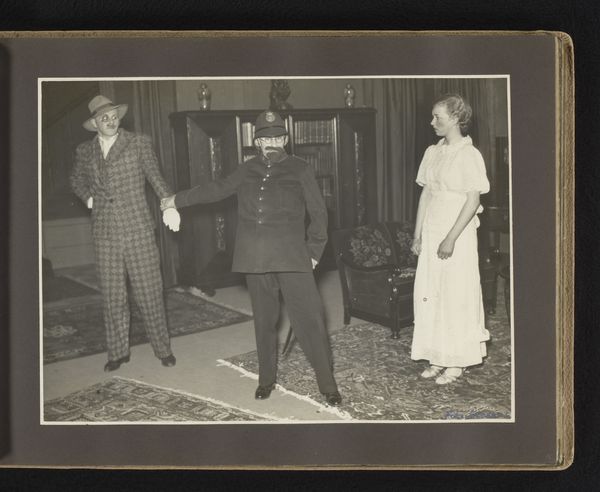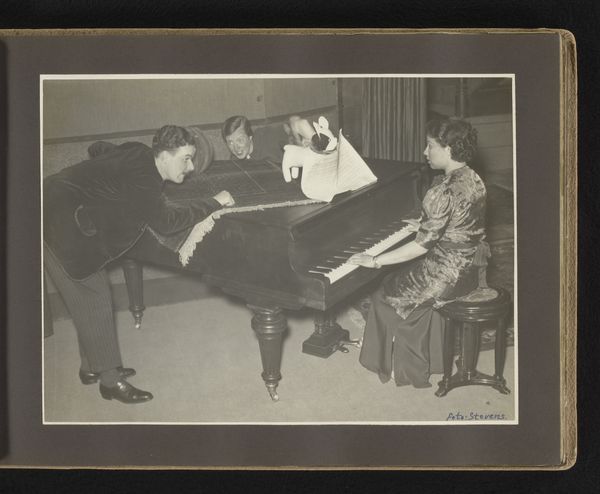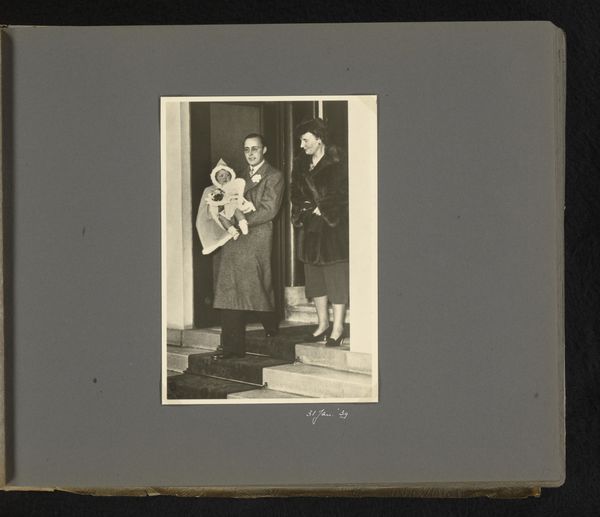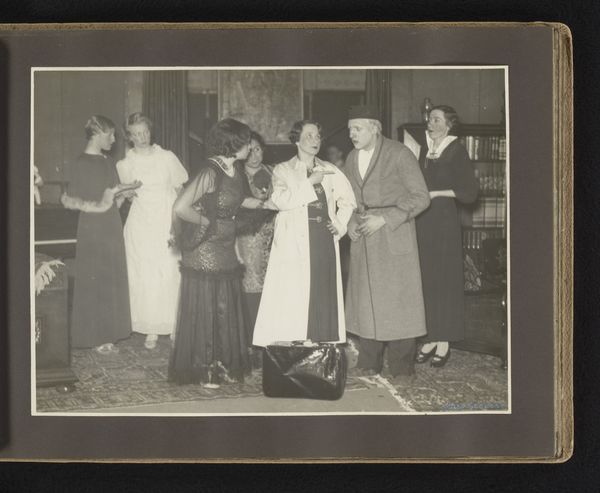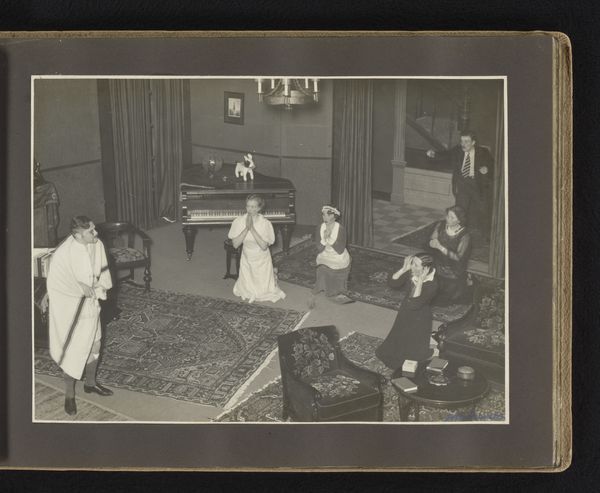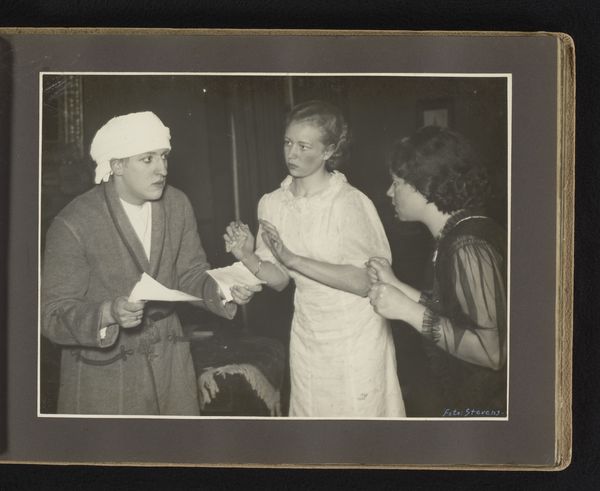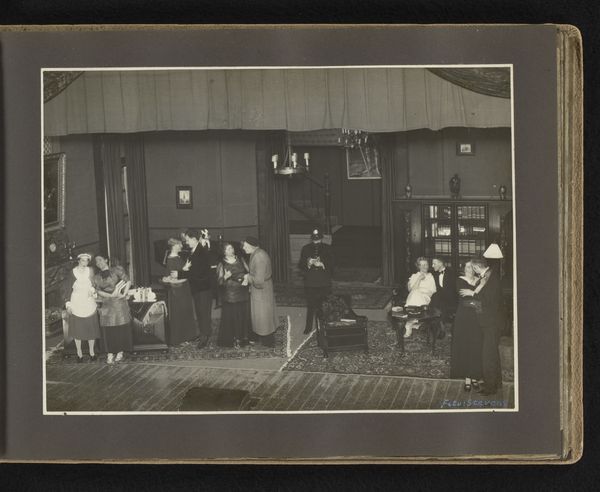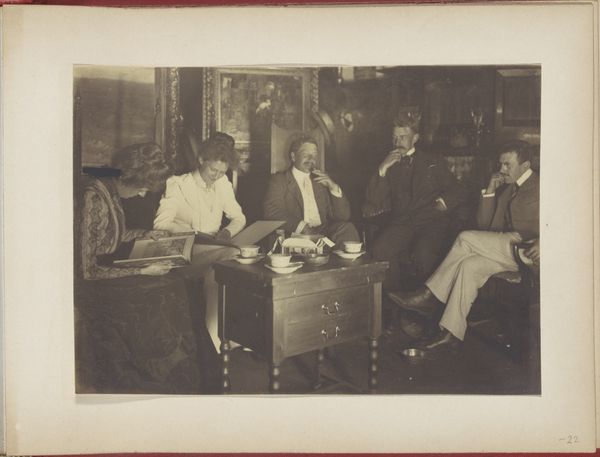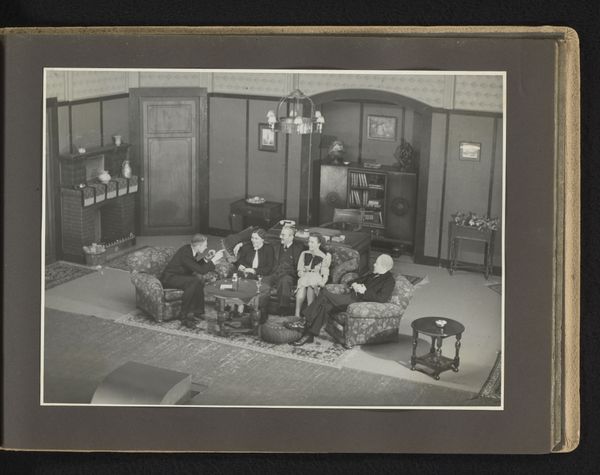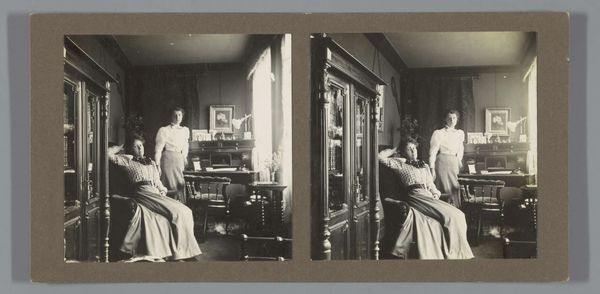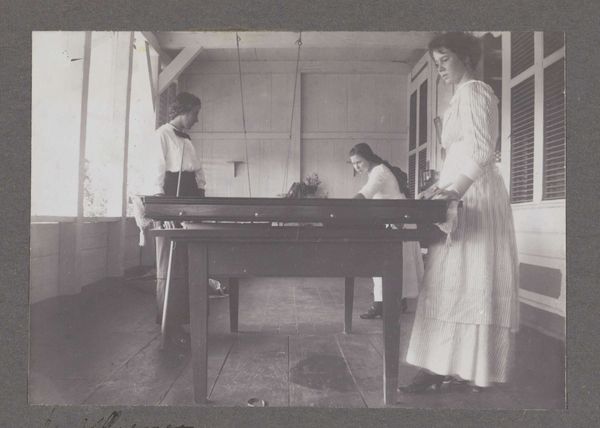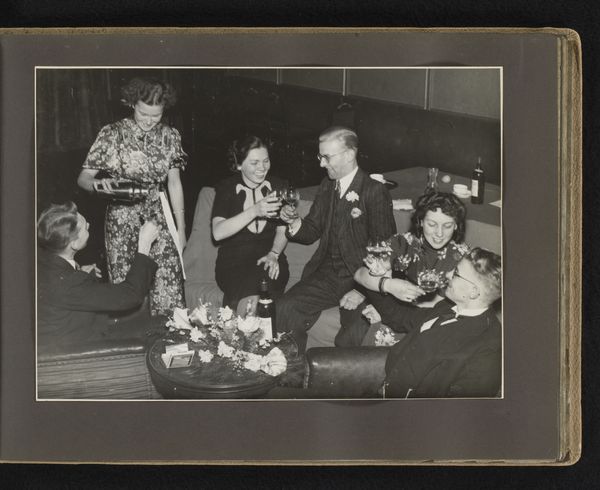
mixed-media, performance, photography
#
portrait
#
mixed-media
#
performance
#
photography
#
culture event photography
#
historical photography
#
historical fashion
#
genre-painting
Dimensions: height 173 mm, width 232 mm, height 211 mm, width 285 mm
Copyright: Rijks Museum: Open Domain
Curator: The Fotobureau Stevens' captured a scene from a play, possibly dating to 1936. It’s titled “Een scène uit het toneelstuk 'Wat Jonas overkwam'” or "A Scene from the Play 'What Happened to Jonas'". Editor: Right, and just looking at it, there's this tension, a push-and-pull visually enacted through the actors' gestures. One woman is reaching for the male actor, almost pulling him, while another stands apart. It definitely sparks curiosity. Curator: Precisely. We see a confluence of symbolic representations – a toy dog placed atop the piano, for instance. Considering its likely production in 1936, does the ‘Jonas’ of the play’s title evoke a parallel to the Biblical Jonas who faced tumultuous upheaval? Editor: It's certainly worth considering! The play, if set against the rising pre-war anxiety, might have used that figure to symbolize personal turmoil amidst looming global catastrophe. This photograph presents a very particular snapshot of gender roles, the active man versus the pleading and reserved women. Are those behaviors dictated by the character the person is supposed to embody, or reflections of gender norms of that era? Curator: Absolutely. The formal attire of the figures and the piano as a central object do carry a strong aura of bourgeois stability disrupted. What readings, then, does this photography invite of theatrical art—as performance or a document? Editor: I wonder about who 'Jonas' is meant to represent for audiences of the time, particularly regarding anxieties about identity in times of social and political changes. The very nature of photography is revealing how social life plays out and is captured. This work encapsulates how theatre—performance itself—mirrors back anxieties of social upheaval that occurred as the West became consumed by warfare and violence in that era. Curator: It prompts us to think about how the medium captures a performative space, turning the intangible—a staged scene—into a concrete object of cultural reflection. Editor: And in viewing today, hopefully allows audiences to rethink performative identity—and all the norms and exclusions they carry within. I hadn't expected it would make me consider something so deeply historical, and relevant today!
Comments
No comments
Be the first to comment and join the conversation on the ultimate creative platform.

